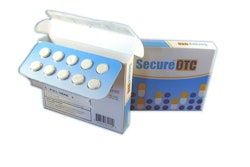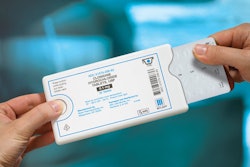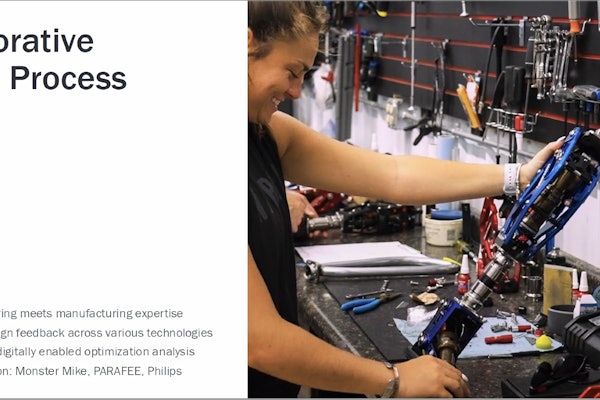It's a statistic that almost every healthcare facility knows: 40 percent of all healthcare-acquired infections are urinary tract infections (UTI). Since catheters - the most common source of these infections - are used on over four million hospital patients a year, the chances of a patient getting a UTI are pretty high. In fact, the daily risk for patients acquiring a urinary infection is as high as seven percent when indwelling urethral catheters remain in their original position.
Yet, it was an additional fact that jumped out at ABC News contributor and best-selling author John Nance as he was interviewing experts for the new healthcare educational series, CAUTI Prevention Today.
"In up to 50 percent of these patients, a urinary catheter is not medically indicated, but is inserted for either an unclear or inappropriate indication, such as urinary incontinence," said Nance. "And the duration of the catheterization is often inappropriately prolonged because physicians forget that their hospitalized patients have catheters in place."
How industry leaders are working to address these and other issues is the subject of CAUTI Prevention Today, which is sponsored by Medline Industries, Inc. in conjunction with its Race to ERASE CAUTI awareness campaign. In the four-part series, Nance interviews a diverse cross-section of experts who share insights into each facet of the prevention equation - from highlighting best practices to education and training. Also included are interviews with clinicians who are focusing on culture change and alternatives to catheterization as part of their prevention efforts.
"The CDC, IDSA and SHEA have developed a compendium of the various practices available, so we know the information is out there," said Nance, author of Why Hospitals Should Fly: The Ultimate Flight Plan to Patient Safety and Quality Care and a founding member of the National Patient Safety Foundation. "At the same time, we also know that some of the strategies are not well understood or largely ignored, and that's why we cover them in this series."
CAUTI Prevention Today is currently available on DVD and is being distributed to more than 2,000 hospitals during Infection Prevention Week.
Clinicians may also request a free copy by emailing [email protected].
The series will be available online in January 2010.
Catheter-associated urinary tract infections are one of the most common healthcare-associated infections. Not only do they comprise 40 percent of all institutionally acquired infections, but also eight percent of infections in the home care setting. CMS estimates that the average cost for treating a patient who acquires a CAUTI during their hospital stay is $44,043.
Despite those numbers, hospitals historically haven't focused on CAUTI prevention because the infections are not associated with high morbidity and mortality. However, as a result of 2008 CMS regulation changes limiting reimbursements for hospital-acquired infections, many hospitals are now challenged to implement evidence-based strategies and interventions. In fact, a poll from American Medical News revealed that 48% of facilities felt CAUTI would prove to be the most challenging of the hospital-associated conditions targeted by the CMS reimbursement policy change.
Yet, it was an additional fact that jumped out at ABC News contributor and best-selling author John Nance as he was interviewing experts for the new healthcare educational series, CAUTI Prevention Today.
"In up to 50 percent of these patients, a urinary catheter is not medically indicated, but is inserted for either an unclear or inappropriate indication, such as urinary incontinence," said Nance. "And the duration of the catheterization is often inappropriately prolonged because physicians forget that their hospitalized patients have catheters in place."
How industry leaders are working to address these and other issues is the subject of CAUTI Prevention Today, which is sponsored by Medline Industries, Inc. in conjunction with its Race to ERASE CAUTI awareness campaign. In the four-part series, Nance interviews a diverse cross-section of experts who share insights into each facet of the prevention equation - from highlighting best practices to education and training. Also included are interviews with clinicians who are focusing on culture change and alternatives to catheterization as part of their prevention efforts.
"The CDC, IDSA and SHEA have developed a compendium of the various practices available, so we know the information is out there," said Nance, author of Why Hospitals Should Fly: The Ultimate Flight Plan to Patient Safety and Quality Care and a founding member of the National Patient Safety Foundation. "At the same time, we also know that some of the strategies are not well understood or largely ignored, and that's why we cover them in this series."
CAUTI Prevention Today is currently available on DVD and is being distributed to more than 2,000 hospitals during Infection Prevention Week.
Clinicians may also request a free copy by emailing [email protected].
The series will be available online in January 2010.
Catheter-associated urinary tract infections are one of the most common healthcare-associated infections. Not only do they comprise 40 percent of all institutionally acquired infections, but also eight percent of infections in the home care setting. CMS estimates that the average cost for treating a patient who acquires a CAUTI during their hospital stay is $44,043.
Despite those numbers, hospitals historically haven't focused on CAUTI prevention because the infections are not associated with high morbidity and mortality. However, as a result of 2008 CMS regulation changes limiting reimbursements for hospital-acquired infections, many hospitals are now challenged to implement evidence-based strategies and interventions. In fact, a poll from American Medical News revealed that 48% of facilities felt CAUTI would prove to be the most challenging of the hospital-associated conditions targeted by the CMS reimbursement policy change.
Companies in this press-release





















